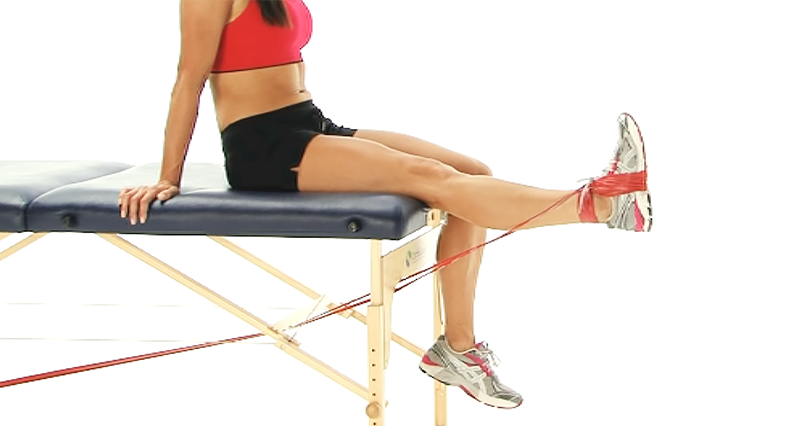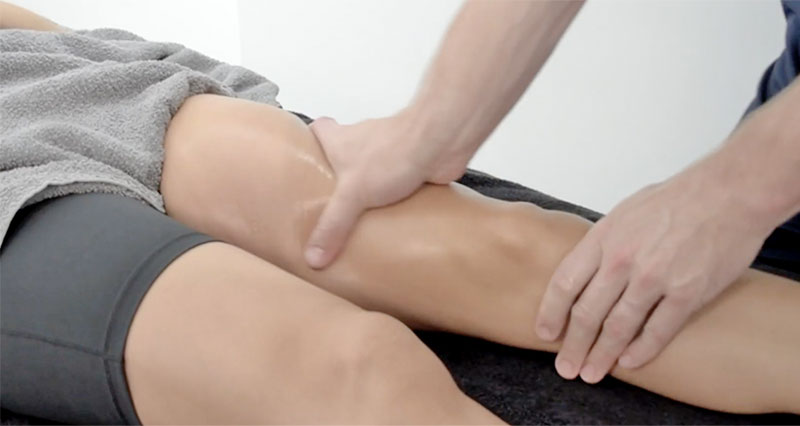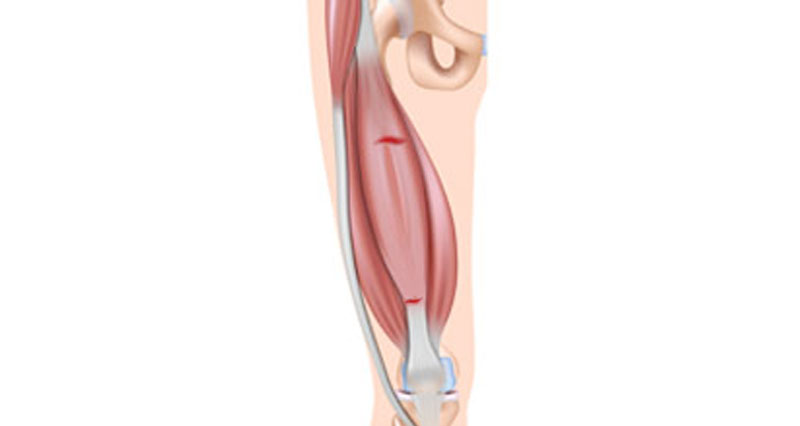The following thigh strain exercises form part of our full step-by-step rehabilitation program. We include both stretching and strengthening exercises specifically for the quadriceps muscle at the front of the thigh. but additionally, we include activation exercises to keep the hip muscles firing as well as functional or sports specific exercises. It is important to avoid quadriceps stretches during the acute phase and always make sure exercises are pain-free.
Medically reviewed by Dr Chaminda Goonetilleke, 21st Feb. 2022
Thigh strain stretching exercises
Stretching exercises form an important part of rehabilitation for quadriceps muscle strains. However, it is important to avoid quadriceps stretches in the early stages of rehab.
Active range of motion exercises
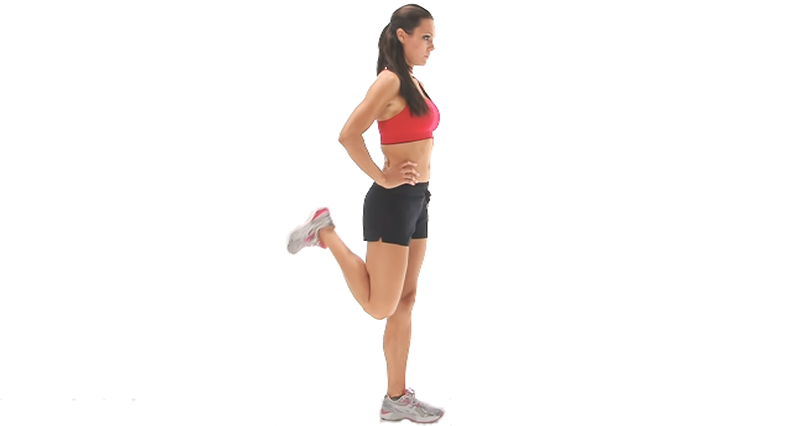
- Simply bend and straighten the knee through its full pain-free range of motion.
- This can be done in the sitting position, the standing position and lying down.
- Do not overstretch too soon. If it is painful then avoid it!
- Perform 10 reps at a time, at least 3 times a day.
Static quadriceps stretch
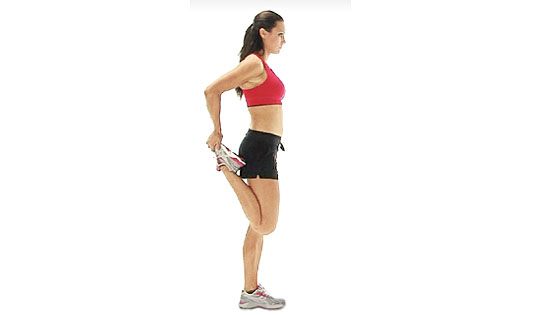
This can be performed in either standing or laying on your front.
- Pull the foot of the injured leg towards your buttock until you can feel a gentle stretch on the front of the thigh.
- To increase the stretch, tilt your hips backwards.
- Hold for 20-30 seconds and repeat 3 times.
- Do this at least 3 times a day.
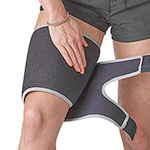
Buy Thigh Supports
Passive quadriceps stretch
This involves using some external force to help stretch the muscles. You can perform either this stretch or the static quad stretch above, there is no need to do both!
- You can use a wall by standing in front of it, bending the knee and leaning back onto the foot.
- Or you can get a partner to push your leg in the laying down stretch.
- Again, hold for 20-30 seconds and repeat 3 times, at least 3 times a day.
Hip flexor stretch
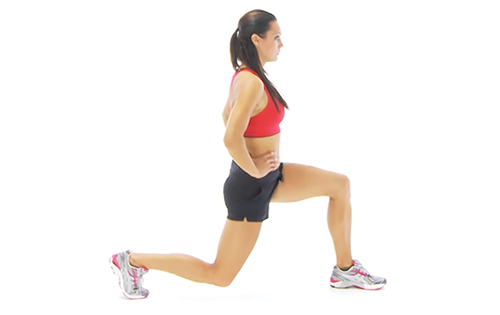
This stretch will focus on the rectus femoris and Iliopsoas muscles.
- Kneel with one knee on the floor and the other foot out in front with the knee bent.
- Push your hips forward and keep the back upright.
- You should feel a stretch at the front of the hip and the top of the thigh.
- Hold for 20-30 seconds, repeat 3 times, at least 3 times a day.
Thigh strain strengthening exercises
Strengthening exercises can begin as soon as they are pain-free to perform. If it hurts, don’t do it. In grade 1 tears, exercises may be started from day 2.
Isometric quadriceps contractions
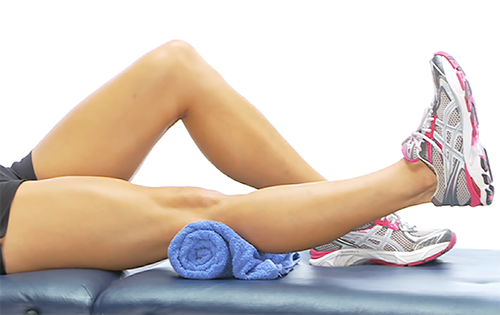
Static contractions can be used very early on in the rehab process. They involve contracting the muscle without any movement of the leg. This can be done in standing or sitting with the legs out straight.
- Hold contractions for 10 seconds at a time.
- Relax for 5 seconds before repeating and perform 10 repetitions. As your strength improves, increase sets to 2 or 3 sets of 10 reps.
- Although this exercise is boring it will maintain muscle bulk and ensure you are back to full fitness faster.
- Continue with this exercise on a daily basis until you are able to perform the concentric exercises below.
Straight leg raise
This exercise can be done lying down or sitting. Lying down is easier. Sit flat on the floor with your legs straight out in front of you.
- Raise one leg off the floor keeping the knee straight.
- Hold for 3 to 5 seconds before lowering back to the ground. Repeat 10 to 20 times.
- This exercise can be done daily.
- Progress the exercise by increasing the length of hold and the number of reps.
- Ankle weights can be added to increase the difficulty.
Knee extensions
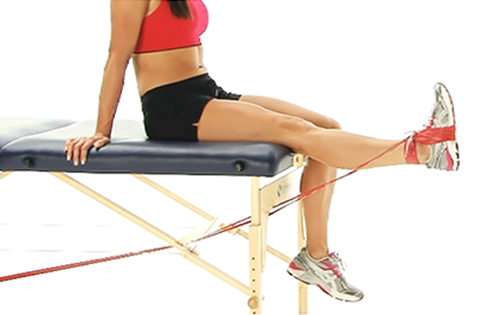
The quad muscles are responsible for straightening the knee. This exercise can be performed using no weight, ankle weights, a resistance machine or a resistance band.
- Start with no weight and then progress to either ankle weights or a resistance band.
- Straighten the knee then slowly return to the start position.
- Begin with 2 sets of 10 reps and gradually increase to 3 sets of 15 gradually increasing the weight or resistance when comfortable to do so.
Lunges
Lunges are a slightly easier version of a squat and are sometimes called split squats. Start with a wide stance.

- Bend the back knee towards the floor, but don’t let it touch.
- Keep your back upright throughout and don’t let the front knee move forwards past the toes.
- Start with 2 sets of 10 reps with the injured leg in front and then do 2 sets of 10 with the injured leg behind. Gradually increase to 3 sets of 15.
- To make it harder, you can add either a dumbbell in each hand or a barbell over the shoulders.
Squats
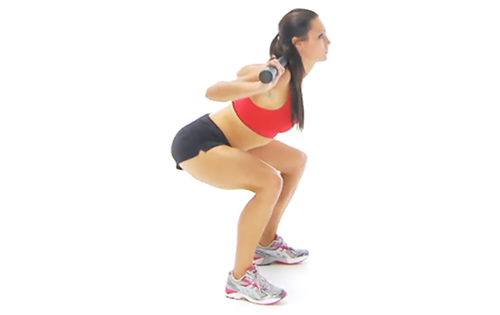
Squats can be performed in many ways including ball squats, double-leg squats, and single-leg squats.
- Begin with 1/4 squats, or as far as comfortable. As you become stronger, perform deeper squats.
- Start with 2 sets of 10 reps and gradually increase to 3 sets of 15 before progressing.
References
- Orchard JW. Intrinsic and extrinsic risk factors for muscle strains in Australian football. Am J Sports Med 2001;29(3):300–3.
